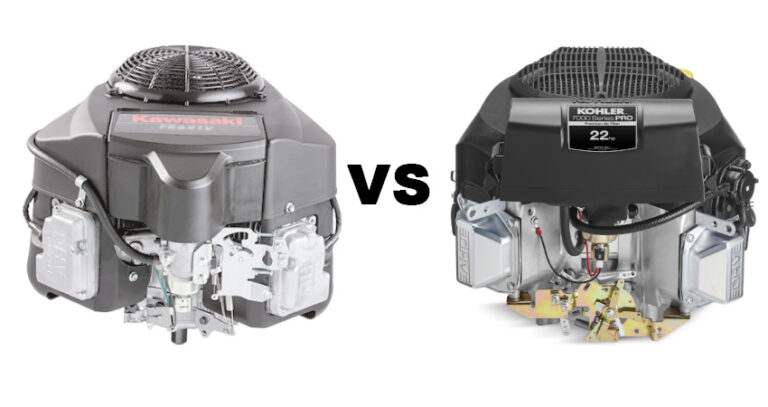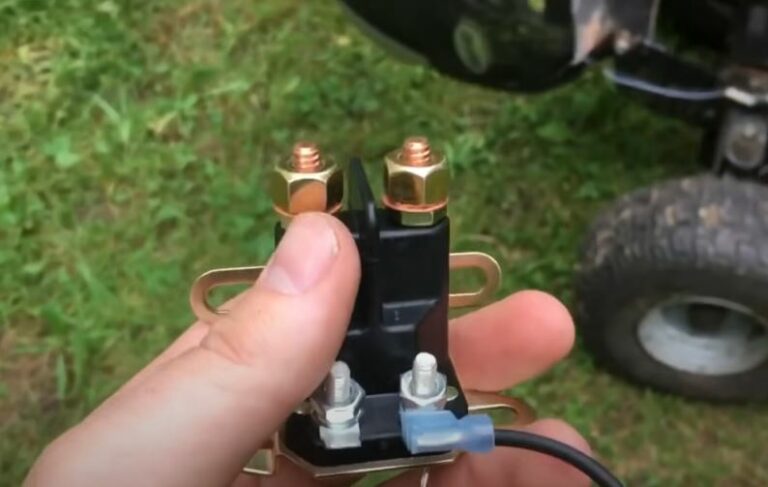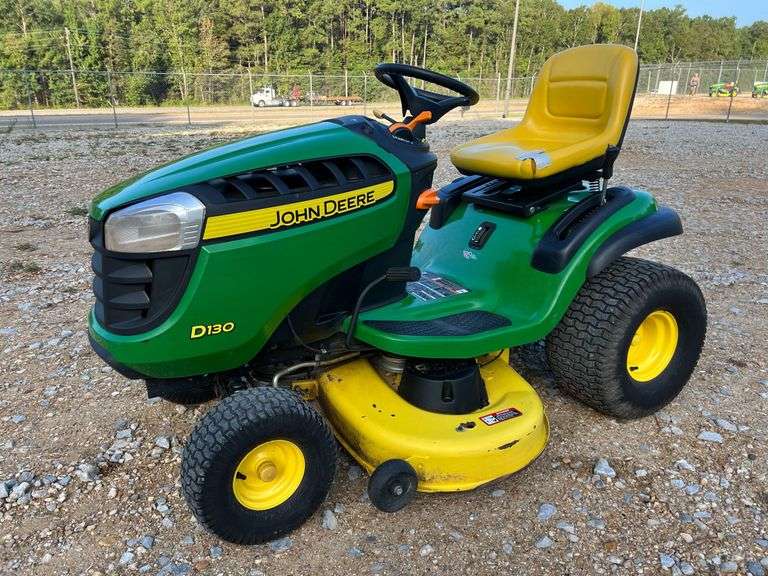Type of Oil to Use in Husqvarna Riding Mowers
Are you confused about what oil you should use in your Husqvarna riding mower? Don’t worry, I’ll help you out.
The oil Husqvarna recommends for their engines includes SAE 30 oil, 10W-30 oil, Synthetic oil, and other types of oil. You can choose between them based on a number of factors.
In this article, I’ll walk you through all the available types in the market, the importance of using the right oil, things you need to keep in mind while selecting the oil, and how to change the oil in your mower.
Let’s get started.
Importance of Using the Recommended Oil

Using the recommended oil for your Husqvarna riding mower is critical to maintaining performance, protecting the engine, and getting a long life out of it.
While it may be tempting to use a different oil for convenience or cost reasons, going against the manufacturer’s recommendations can have serious consequences.
Let’s explore the key reasons why using the recommended oil is essential.
1. Optimal Performance
The oil recommended for your Husqvarna riding mower is specially formulated to meet the engine’s specifications and provide optimal performance.
It has the appropriate viscosity and additives to provide proper lubrication and protection under all operating conditions.
Using the incorrect oil can lead to insufficient lubrication, increased friction, and poor performance. It can cause problems like reduced power, sluggish operation, and even engine stalling.
By using the recommended oil, you can improve the performance of your mower and enjoy smooth and efficient operation.
Also Read: Husqvarna z242f Problems
2. Engine Protection
The engine is the heart of your Husqvarna riding mower, and it must be protected by using the recommended oil.
The oil reduces friction and wear and tear by acting as a lubricant between the moving parts.
It also aids in the dissipation of heat generated during engine operation. This prevents overheating and damage.
The recommended oil is engineered to provide superior protection against contaminants like dirt and debris, resulting in clean and efficient engine operation.
Using the proper oil, you can protect your engine from wear, extend its lifespan, and avoid costly repairs or replacements.
3. Warranty Compliance
Using the recommended oil is critical not only for the performance and engine protection of your mower but also for your warranty.
Manufacturers specify the type of oil to be used in their machines for a reason. Going against these recommendations may result in the warranty being nullified, leaving you responsible for any repairs or maintenance costs.
To ensure that your warranty remains valid and your mower is protected, it’s essential to use the oil specified by the manufacturer.
It provides peace of mind, knowing that you are adhering to the manufacturer’s guidelines and preserving the warranty coverage for your Husqvarna riding mower.
Read Also: Husqvarna Zero Turn Mower Problems
Suitable Oils for Husqvarna Riding Mowers
You have several options when it comes to selecting the right oil for your Husqvarna riding mower.
The type of oil you select depends on factors, including the operating conditions and temperature range.
Let’s go over the different types of oil suitable for Husqvarna riding mowers:
1. SAE 30 Oil: Reliable Performance in Moderate Temperatures
SAE 30 oil is a single-grade oil recommended for use in Husqvarna riding mowers operating in moderate temperatures.
It is best for mowing when the temperature is above 40°F (4°C).
SAE 30 oil ensures smooth engine performance and longevity by providing excellent lubrication.
Because it is widely available and less expensive than synthetic oil, it is a popular choice among mower owners.
It is crucial to remember that SAE 30 oil should not be used in extremely cold weather because it might make starting difficult.
2. 10W-30 Oil: Versatile Performance in Varying Temperatures
In comparison to SAE 30 oil, 10W-30 oil is a multigrade oil with a wider temperature range of usability.
It has a viscosity rating of 10 when operating at low temperatures and 30 when doing so at room temperature.
Because of its versatility, it can be used in Husqvarna riding mowers that operate in temperatures ranging from 0°F (-18°C) to 100°F (38°C).
When compared to SAE 30 oil, 10W-30 oil provides better cold-weather startup performance, ensuring proper lubrication from the moment you start your mower.
It also provides adequate protection during hotter temperatures, preventing engine damage.
3. Synthetic Oil: Premium Protection for Your Mower’s Engine
Synthetic oil is a high-performance lubricant designed specifically for engine protection.
It is designed to perform well in extreme temperatures, making it suitable for Husqvarna riding mowers in cold and hot climates.
Synthetic oil has improved viscosity stability, which means it retains its lubricating properties for longer periods, even in harsh conditions.
It resists breakdown and sludge formation, which can help your mower’s engine last longer.
Additionally, synthetic oil flows more easily during startup, reducing engine wear and tear.
When choosing synthetic oil, make sure it meets the manufacturer’s specifications for your Husqvarna riding mower model.
4. Other Oil Options: Refer to the Manufacturer’s Guidelines
Other oil options suitable for specific Husqvarna riding mower models may exist in addition to the oils mentioned above.
For precise oil requirements, check with the manufacturer and your mower’s manual.
Depending on the engine specifications, different models may have different oil recommendations, and it is critical to follow these guidelines to maintain optimal performance and warranty coverage.
Things to Take into Account When Selecting Oil for Your Mower
Choosing the best oil for your Husqvarna riding mower is not simple.
Several factors must be considered to ensure that you select the oil that best suits your mower’s needs and operating conditions.
Here are some of the things you need to be mindful of when choosing oil for your Husqvarna riding mower:
1. Manufacturer’s Recommendations
The manufacturer’s recommendations are the first and most important factor to consider.
Husqvarna provides specific guidelines regarding the type, viscosity, and oil performance standards suitable for each riding mower model.
Sticking to these guidelines ensures peak performance, protects your warranty, and extends the life of your mower’s engine.
2. Operating Conditions and Climate
The kind of oil you should use for your Husqvarna riding mower depends heavily on the environment and operating conditions there.
Take into account the temperature in which you use your mower. If you frequently mow in colder weather, a multipurpose oil like 10W-30 may be better suited to ensure proper lubrication during startup.
In hotter climates, a higher-viscosity oil or synthetic oil may be a better choice to handle the increased heat and prevent engine damage.
3. Mower Usage and Frequency
Another thing to think about is how often and how intensively you use your Husqvarna riding mower.
If you have a large lawn or frequently perform heavy-duty mowing tasks, you should consider using high-quality synthetic oil.
Engine parts go through less wear and tear thanks to the enhanced protection and lubrication that synthetic oil offers. It is especially helpful for people who frequently push their lawnmowers to the limit.
4. Oil Change Intervals
Consider the oil change intervals suggested by Husqvarna for your particular model.
Depending on usage or engine design, some riding mowers may require more frequent oil changes.
If you prefer longer intervals between oil changes, synthetic oil may be a good option due to its superior longevity and resistance to breakdown.
However, always follow the manufacturer’s guidelines to guarantee proper care and coverage of the warranty.
5. Personal Preferences and Budget
Finally, take into account both your budget limits and personal preferences.
While the manufacturer’s recommendations should be prioritized, you may have personal preferences based on previous experiences or recommendations from trusted sources.
Additionally, different oil types may come at varying price points. Evaluate your budget and choose an oil that provides the necessary performance and protection within your financial means.
Step-by-Step: Changing the Oil on a Husqvarna Riding Mower
Here’s a step-by-step guide for changing the oil in your Husqvarna riding mower:
Before you begin, read your mower’s manual for specific instructions and safety precautions. Ensure the engine is cool before starting.
1. Collect the Required Tools and Supplies
Collect the tools and materials you’ll need for the oil change, including a wrench or socket set, an oil drain pan, a funnel, a new oil filter (if required), and the recommended type and amount of oil for your mower.
2. Position the Mower and Prepare for Drainage
Place your lawnmower on a level surface. Apply the parking brake, turn off the engine, and take out the ignition key.
Find the oil drain plug beneath the mower’s engine. Put the oil drain pan underneath to catch the used oil.
3. Drain the Old Oil
Gently loosen and remove the oil drain plug with a wrench. Let all of the used oil fully flow into the oil drain pan. Make sure the engine has been completely drained of oil.
4. Replace the Oil Filter (If Applicable)
If your Husqvarna riding mower has been equipped with the same oil filter for a long time, this is a good time to replace it.
Apply a thin layer of new oil to the new oil filter’s gasket, then install and tighten it according to the manufacturer’s instructions.
5. Refill with Fresh Oil
Find the oil fill cap or dipstick tube on your mower’s engine. Remove it and insert the funnel.
Slowly pour the recommended type and amount of fresh oil into the engine. Be careful not to overfill it. Check the oil level using the dipstick, if applicable, or the recommended method provided in the manual.
Add more oil if needed to get it to the proper level.
6. Clean Up and Throw away the Used Oil
Using a clean cloth, wipe away any spilled oil from the engine and surrounding areas. Seal the used oil in the drain pan and properly dispose of it at a designated recycling center or as required by local regulations.
7. Perform a Final Check
Make sure the oil drain plug is tight, the new oil filter is correctly installed (if necessary), and the oil fill cap or dipstick is securely attached. Check for any signs of leaks.
Frequently Asked Questions
Can I use any type of oil in my Husqvarna riding mower?
It is important to use the oil recommended by the manufacturer for optimal performance and longevity of your Husqvarna riding mower.
Using the incorrect type of oil can reduce engine performance and can also nullify the warranty.
What if I use the incorrect oil in my mower?
The use of the incorrect oil can result in poor engine performance, increased wear and tear, and potential damage to critical components.
In order to ensure proper lubrication and protection, it is best to use the manufacturer-suggested oil.
When should I change the oil in my riding mower?
The interval at which you change the oil in your Husqvarna riding mower is determined by the model and usage.
In general, oil should be changed every 25 to 50 hours of operation, or at least once a season. Refer to your mower’s manual for specific guidelines.
Is synthetic oil safe to use in an older Husqvarna mower?
Yes, if it meets the manufacturer’s recommendations, you can use synthetic oil in an older Husqvarna mower.
Synthetic oil can offer enhanced protection and performance benefits, regardless of the age of the mower. However, consult your manual or a professional if you have any concerns.
Conclusion
Choosing the right oil and keeping it in good condition in your Husqvarna riding mower is critical for the best engine performance and longevity.
Regular oil changes, following the manufacturer’s recommendations, and considering factors such as climate and usage will help keep your Husqvarna riding mower in excellent condition for years to come.
Take care of your mower’s engine, and it will take care of your lawn.






